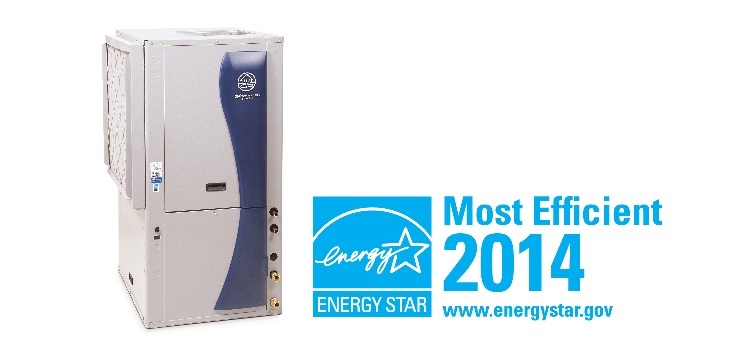WaterFurnace Geothermal Systems are an Energy-Saving Plus for “Net-Zero” Home

Objective
Reduce space heating, cooling and domestic hot water costs in efforts to create a net-zero home that is reliable and comfortable throughout the year.
Project Details
- Home Size: 3,000 Square Feet
- Unit Type: Envision 4-ton
- Number of Units: 1
- Loop Type: Vertical
Equipment Used
 Download 'Net Zero Home' Case Study
Download 'Net Zero Home' Case Study
The Net-Zero Goal is within Reach. To reach that net-zero goal, however, a home’s biggest energy hogs must be put on a serious diet. In the typical American home, space heating, cooling and domestic hot water productions consume 68% of the total energy budget. “The good news is that you can achieve high-efficiency practices with current technologies,” says net-zero homeowner David Shepler. “Heating and cooling equipment is available that can help you reach net-zero today.”
Every high-performance home takes advanced planning. We want to get everything working together as a building system, not just a comfort system.Shepler’s 3,000-square-foot, 3-story NZE home in New Paltz, NY, was built by Anthony Aebi of Greenhill Contracting. His “Green Acres” development is the first single-family NZE residential development in the nation, with five single-family NZE homes sold and occupied. Shepler’s home incorporates a 10-kilowatt (kW) solar photovoltaic (PV) system along with a tight building envelope, heat recovery ventilation (HRV) system, insulating concrete form (ICF) construction, structural insulated panels (SIP) in the basement, and 12-inch spray-foamed rafters. The mechanical and PV system were specified and installed by Hudson Valley Clean Energy. “We did a load analysis of all the appliances and mechanical equipment,” says John Wright, VP for Hudson Valley. “Every high-performance home takes advanced planning. That’s especially true with a NZE home. We want to get everything working together as a building system, not just a comfort system. Then we remotely monitor energy consumption to confirm the savings.” The comfort system included a WaterFurnace Envision two-stage, 4-ton heating and cooling system with desuperheater and low speed fan. The system’s heating Coefficient of Performance (COP) is 3.64 at 30°F, and the cooling Energy Efficiency Ratio (EER) is 17.0 at 80°F. This compares to 2.25 COP and 10.65 EER for a typical 18 SEER heat pump. The additional energy savings made it possible for Shepler to exceed his net-zero goal, who notes that “measuring from March 2009 to March 2010, I actually produced 1,700 kW more electricity than I used.” Building science is not understood or accepted by most in the construction industry. It is easy to design a NZE building but very hard to actually have one. The design, construction and operation must be nearly flawless in order to succeed.
“My experience working as the HVAC designer and building performance consultant on these and other projects clearly demonstrates the need to have a commissioning agent, whose focus is NZE, involved from the beginning of design through occupancy,” says Lloyd Hamilton, President for Verdae, LLC. “There is need for careful design of the geothermal system in order to achieve net-zero energy.”
With Shepler’s home, an Envision unit was selected that used a desuperheater integrated with a domestic hot water storage tank and solar thermal hot water system. Combined heating, cooling and domestic hot water costs come to less than $500 a year—which was easily recouped by power produced by the PV system. While the ways of achieving successful NZE performance varies from home to home and builder to builder, there are a few common principles. Reducing water heating and space heating and cooling loads is essential. When operating the comfort system in a conventional home, a programmable thermostat with night setback function is often used to minimize system runtime while everyone is asleep, then ramps temperatures to a comfortable level just before everyone wakes up.
David Shepler believes that if he can achieve NZE in the state of New York, where ambient temperatures and solar resources are worse than other regions, then it can be achieved practically anywhere.“I don’t use night setback,” says Shepler. “In summer, I keep the temperature at 75°F and in winter at 69°F. I also keep the fans running at low speed constantly. The HRV keeps humidity at a comfortable level. The envelope is designed to maintain constant indoor temperature, so night setback would actually be counter productive.”
David Shepler believes that if he can achieve NZE in the state of New York, where ambient temperatures and solar resources are worse than other regions, then it can be achieved practically anywhere. Indeed, a recent National Home Builders study indicates that NZE homes “will eventually become economically competitive with conventional construction when utility costs are included in the cost of home ownership.” As a harbinger of the future, the study sites growth in EPA ENERGY STAR® home sales from zero in 1995 to 130,000 in 2004, with up to 40 percent penetration in some markets. The study predicted that the NZE concept, with continuing federally funded R&D and tax credits lowering the cost of entry, will see “real diffusion into the market as early as 2012” and produce annual energy savings in 2050 amounting to approximately 17% of current U.S. single-family home energy consumption. “With good planning, the added upfront cost for a NZE home is about 10%,” says John Wright of Hudson Valley Clean Energy. “But when you add in the savings from utility costs—which are only going to go up—and then factor in resale value for the property, NZE is a safe investment. Much safer than the stock market.”
Leading the Way with Innovation & Understanding of the Industry
We have a team of Engineers, Technical Staff and Customer Service members waiting to help you!
All Original Content Copyright © Eden Energy Equipment.
Phone: 1-800-665-3336 | Fax: 1-866-329-3336 | Email: info@edenenergy.com.